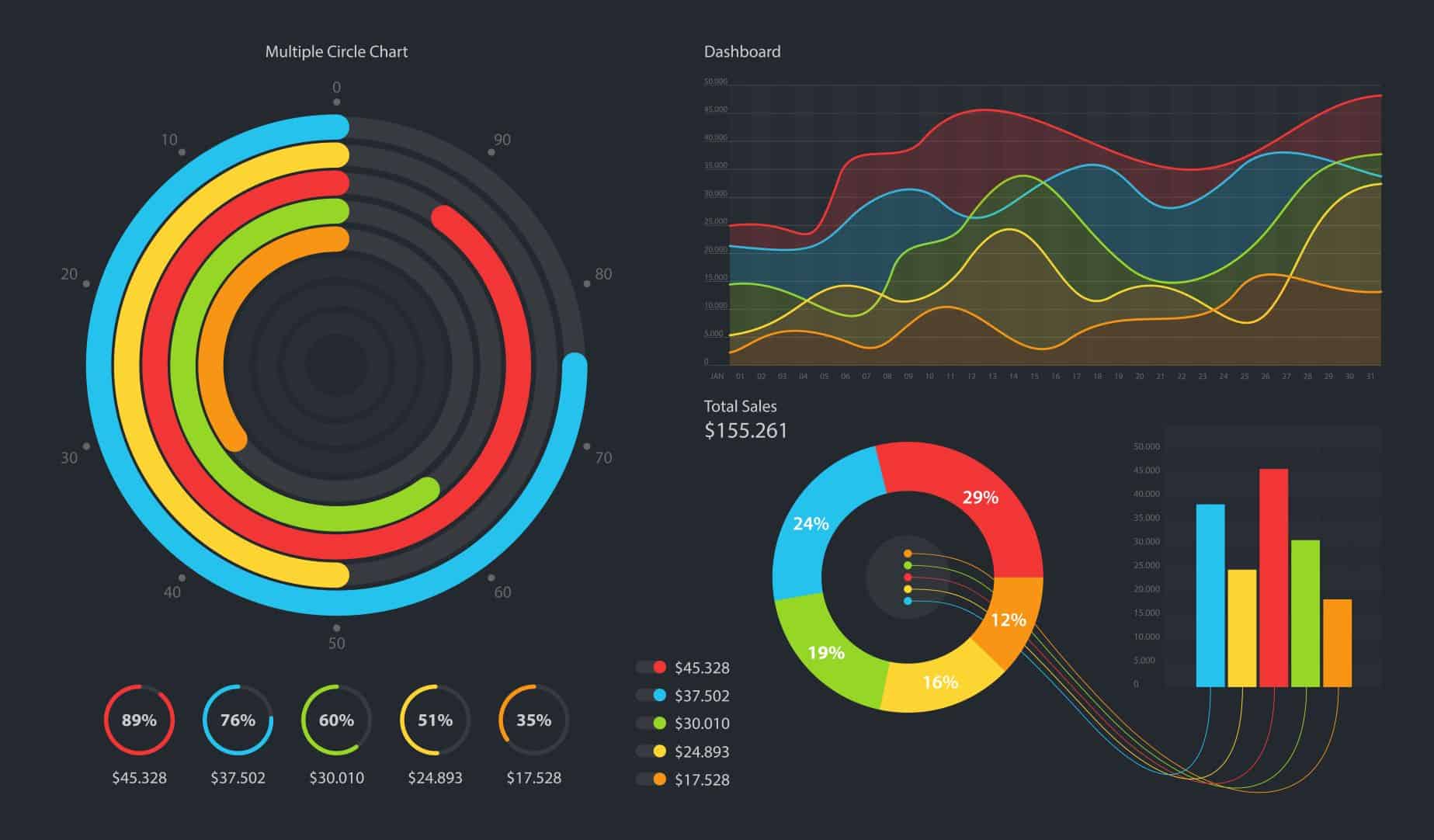Parlare di grafici durante le riunioni in inglese
Durante le vostre riunioni in inglese potreste trovarvi nella condizione di descrivere i grafici inseriti nella vostra presentazione o ascoltare discorsi altrui in cui i grafici sono protagonisti. In questo articolo troverete qualche informazione che potrà tornarvi utile per i prossimi meeting. Let’s start!
📊📈📉
Chart Tabella
Graph Grafico
Line chart Grafico a linee
Bar chart Grafico a barre
Flow chart Grafico di flusso
Pie chart Grafico a torta
Column chart Istogramma
Paired bar chart Grafico a barre a specchio
Segment Segmento
Line Linea
Solid line Linea continua
Broken line Linea tratteggiata
Axis Asse
Come descrivere una situazione crescente ↗
___
Verbi (nel passato)
- Rose (to)
- Increased (to)
- Went up (to)
- Climbed (to)
- Boomed
Sostantivi
- Rose (to)
- Increased (to)
- Went up (to)
- Climbed (to)
- Boomed
- A rise
- An increase
- A growth
- An upward trend
- A boom (a dramatic rise)
Come descrivere una situazione decrescente ↘
___
Verbi (nel passato)
- Fell (to)
- Declined (to)
- Decreased (to)
- Dipped (to)
- Dropped (to)
- Went down (to)
- Slumped (to)
- Reduced (to)
Sostantivi
- A fall
- A decline
- A decreased
- A drop
- A slump (a dramatic fall)
- A reduction
Come descrivere una situazione stabile ➡
___
Verbi (nel passato)
- Levelled out (at)
- Did not change
- Remained stable (at)
- Remained steady (at)
- Maintained the same level
Sostantivi
- A levelling out
- No change
Aggettivi utili per descrivere il cambiamento
___
Dramatic Drammatico
Sharp Improvviso
Huge Enorme
Substantial Sostanziale
Steep Ripido
Significant Significante
Moderate Moderato
Slight Leggermente
Small Piccolo
Minimal Minimo
Aggettivi utili per descrivere la velocità del cambiamento
___
Rapid Rapido
Quick Veloce
Swift Repentino
Sudden Improvviso
Steady Regolare
Slow Lento
Gradual Graduale
Esempi di descrizioni di grafici/tendenze
- This year unemployment has increased by 20,000 cases. (the difference between this year and last year is 20,000 cases)
- This year there has been an increase in unemployment of 5%.
* Da notare le preposizioni usate: usiamo “by” dopo un verbo ( has increased by), mentre usiamo “of” dopo un sostantivo (unemployment)
- This year unemployment has risen to 10% (the end result is that unemployment is up to 10%).
- This year there has been a rise in unemployment to 10%.
** Da notare le preposizioni usate: usiamo il verbo rise con “to” e il sostantivo a rise con “in”
Parole utili per descrivere valori approssimativi
___
Just under Appena sotto
Roughly Grosso modo
Approximately Approssimativamente
Just over Appena sopra
Nearly Quasi
Around Intorno a
Espressioni utili nella descrizione
- The slices of the pie chart compare the…
- more than 10 per cent…
- The chart is divided into three parts
- …is twice as big as…
- It highlights…
- has the largest (number of)…
- The number .. does not change/remains stable
- less than half…
- The number… increases/goes up/grows by…
- The number… decreases/goes down/sinks by…
- From the graph it is clear…
- The graph shows / indicates/ illustrates….
- It can be seen from the graph.over the next (2 months)… / for the following…
- from … to / between… and…
- during the last (3 months)…
Now that you have a better knowledge on charts, I do believe you won’t panic having meetings which involves the description of charts and graphs. Keep smiling and keep learning English!
